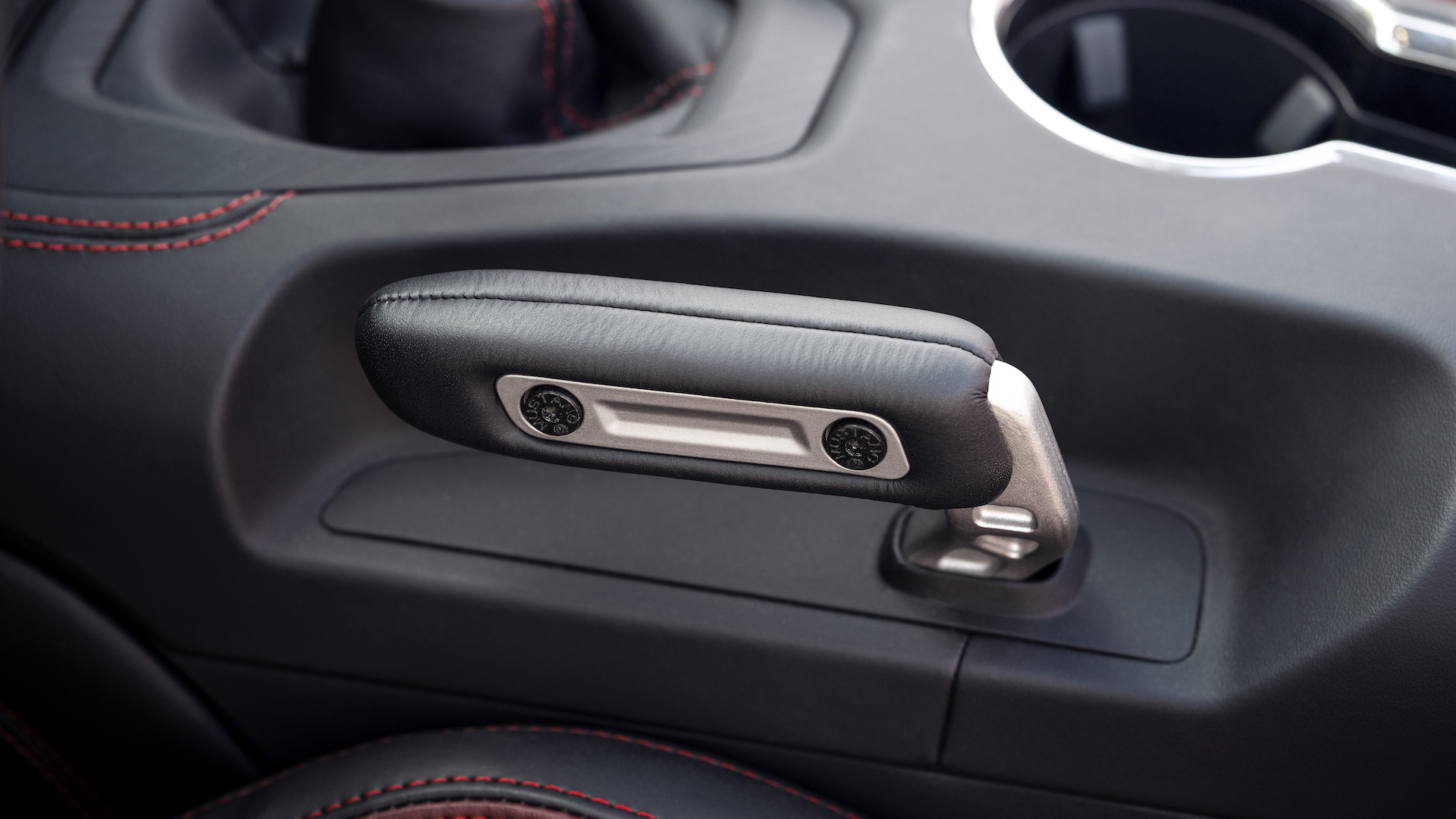

The new 2024 Ford Mustang was finally unveiled Wednesday evening and one of the most interesting features is definitely its Electronic Drift Brake. Offered as part of the Performance Pack and available regardless of engine or transmission choice, it’s essentially what it says on the tin: an e-brake optimized for drifting. A lot like the new Mustang’s Remote Rev function that lets you rev the engine from the key fob, drift mode in the Focus RS, or the Line Lock burnout mode introduced with the last-gen Mustang, it is the latest in a growing line of Ford factory-sanctioned hoon-assist functions.
Unlike a traditional handbrake, the Mustang’s Electronic Drift Brake (henceforth known as the EDB) bounces back down the instant you let go of it. It’s a lot like the hydraulic handbrakes you’d find in a purpose-built drift car driven by flat-brim hat-wearing dudes like Ken Block, Ken Gushi, and Vaughn Gittin Jr., who had a hand—figuratively and literally—in the EDB’s development.
Here’s onboard footage of Gittin drifting his Mustang up Goodwood to give you a visual idea of what I mean. The handbrake is the long metal stick beside his right knee.

In addition to not staying up when engaged, the new Mustang’s EDB is different from a conventional handbrake in that it’s said to be way more instantaneous—and, thus, controllable—and delivers four to five times more brake force. Ford also says that there are two EDB settings, one calibrated for drifting novices and another for more seasoned powersliders.
For those who would like to personalize their Drift Brake, Ford says aftermarket EDB handles can be swapped in. As a small easter egg, the little bolts on the side of the factory handle say “Mustang” on them.


With drifting being potentially hazardous out on public roads, the EDB works in track mode only and must be deliberately enabled via a button on the touchscreen. Outside of track mode, however, it actually becomes a traditional handbrake again but not in the way you’d assume.
Instead of reverting to a regular handbrake that stays up when you pull it, it still bounces back down after pulling on it once, an action that engages the regular parking brake. To release said parking brake, you push down on it when it’s in its default position, essentially rendering the part one big parking brake button.

At a preview event earlier this week, I got to pull on and interact with a stationary Mustang equipped with the EDB, and I can tell you that the input device has a significantly smoother-feeling action than regular manual handbrakes. It’s also got a nice heft that makes it feel like a serious, quality item.
But, of course, we’re looking forward to trying it out in a Mustang that we’re actually allowed to move. Preferably in a big open space. With a lot of extra tires on hand.

Got a tip or question for the author about the new Mustang? You can reach him here: chris.tsui@thedrive.com